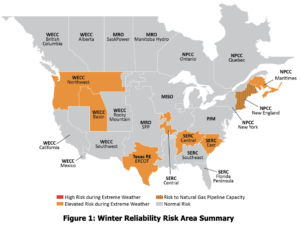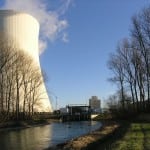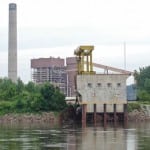Rules proposed by the Environmental Protection Agency (EPA) under Section 316(b) of the Clean Water Act on Monday call for flexible technology standards, determined on a case-by-case basis, for more than 670 power plants across the nation that pull in at least 2 million gallons per day of cooling water. The EPA said the proposal, which seeks to protect aquatic life, establishes a “common sense framework, putting a premium on public input and flexibility.”
But rather than mandating cooling tower requirements for existing power plants, as had been expected, the agency is proposing that all facilities above a minimum size install safeguards against the impingement of aquatic life. State officials can then decide on a case-by-case basis—based on site-specific analysis—whether closed-cycle cooling systems and other technologies are required. “The technologies required under the rule have been in use for several decades and have been implemented at a large number of facilities,” the agency said.
Under the rules, existing facilities that withdraw at least 25% of their water from an adjacent water body exclusively for cooling purposes and have a design intake flow of greater than 2 million gallons per day would be subject to an upper limit on how many fish can be killed by being pinned against intake screens or other parts at the facility. The facility will determine which technology would be best suited to meeting this limit. “Alternately, the facility could reduce their intake velocity to 0.5 feet per second,” the EPA said. “At this rate, most of the fish can swim away from the cooling water intake of the facility.”
Approximately 740 facilities—more than half of the manufacturing and power plants covered by the rule—already employ technologies that are likely to comply with its impingement requirements, the EPA said.
Existing facilities that withdraw larger amounts—at least 125 million gallons per day—would be required to conduct studies to help their permitting authority determine whether and what site-specific controls, if any, would be required to reduce the number of aquatic organisms sucked into cooling water systems. The decision process would include public input.
New units that add more capacity at an existing power plant, on the other hand, would be required to install a closed-cycle cooling system. Closed-cycle cooling is often referred to as cooling towers, or wet cooling. The cooling towers may be tall, as in hyperbolic, natural-draft cooling towers, or short and modular, employing fans to produce draft, as in mechanical evaporative cooling towers, the EPA said.
Compliance with the rule can be achieved by incorporating a closed-cycle system into the design of the new unit or by making other design changes equivalent to the reductions associated with closed-cycle cooling.
The EPA says cooling water intake structures cause adverse environmental impact by pulling large numbers of fish and shellfish or their eggs into a power plant’s cooling system. There, the organisms may be killed or injured by heat, physical stress, or by chemicals used to clean the cooling system. Larger organisms may be killed or injured when they are trapped against screens at the front of an intake structure, it says.
“This proposal establishes a strong baseline level of protection and then allows additional safeguards for aquatic life to be developed through a rigorous site-specific analysis, an approach that ensures the most up to date technology available is being used. It puts implementation analysis in the hands of the permit writers, where requirements can be tailored to the particular facility,” said Nancy Stoner, acting assistant administrator for the EPA’s Office of Water.
The EPA will conduct a 90-day comment period and will carefully consider those comments before taking final action on the proposal. The administrator must take final action by July 27, 2012.
The proposal was released on a court-imposed deadline and as part of a settlement with environmental groups, including Riverkeeper Inc. Under the settlement, the agency agreed to issue rules to reduce injury and death to fish and other organisms.
The EPA’s 2004 Phase II Cooling Water Intake Structure rules were suspended in July 2007 in response to the Second Circuit Court of Appeals decision in Riverkeeper, Inc., v. EPA.
On Monday, Riverkeeper blasted the new proposed rules, saying they would allow power plants and other large industrial facilities to “continue destroying billions of fish and overheating trillions of gallons of water” from the nation’s rivers, lakes, estuaries and marine waters.”
“The proposed rule … was supposed to modernize the way power plants take in and release water used for cooling. Instead, EPA will leave it up to state agencies to figure out requirements for plants, but decades of experience have shown that states lack the resources and expertise to make these decisions on a case-by-case basis and have complained to EPA of the extreme burden of having to do so,” it said in a statement.
“We expected more out of the EPA to protect the country’s waterways from power plants’ destructive impacts,” said Riverkeeper Executive Director Paul Gallay. “A case-by-case approach will simply not work. Instead, it will continue an endless cycle of paperwork and litigation that will leave water bodies across the country unprotected and countless species at risk.”
Sources: POWERnews, EPA, Riverkeeper









